If you own a home, chances are you'll have to test a light switch at some point. Fortunately, it's a relatively simple procedure that requires no special equipment. You only need a multimeter. In this article, we'll show you how to test a light switch with a multimeter. We'll also discuss why it's critical to conduct regular electrical wiring testing in your home. Maintain your safety and understanding!
Types Of Light Switch
· Single-pole switch:
A single-pole switch is the most basic type of light switch; it has two terminals and a single on/off toggle. It controls one circuit, allowing you to turn lights or other electrical devices on and off with the flick of a switch.
· Three-way switch:
Unlike a single-pole switch, a three-way switch allows for control from two different locations (e.g., at the top and bottom of stairs). This type of light switch has three terminals and an on/off toggle in each location so that either location can turn lights or other electrical devices on or off independently of one another.
· Four-way Switch:
Similar to the three-way switch, a four-way switch allows for control from three different locations. It has four terminals and an on/off toggle in each location so that any of the three locations can turn lights or other electrical devices on or off independently of one another.
Knowing what types of light switches are available and understanding their differences is important when replacing existing switches or wiring up new ones. Each type of switch can be used to create different lighting effects within your home, as well as provide energy efficiency benefits by controlling the amount of electricity being used. When installing a light switch it’s important to ensure that the circuit is correctly wired and all safety measures are followed. If you're feeling unsure about your ability to safely install a light switch, seek professional help.
Once installed, the light switch can be used to provide a convenient and efficient way of lighting up your home. With a single-pole switch, three-way switch, or four-way switch you’ll be able to create amazing lighting effects with just the flip of a switch!
Tools and accessories needed for testing a switch:
The following tools and accessories are required for switch testing:
- Multimeter,
- Screwdrivers,
- Wire strippers/cutters.
- Electrical tape
A multimeter is used to measure voltage, resistance, and current in the switch. It can also be used to check the continuity of circuits or components. Screwdrivers are needed to open up the switch for testing purposes and to install new parts if required. Wire strippers/cutters are needed to strip insulation from wires and cut off excess wire length during the re-attachment of leads into terminal blocks on switches.

HOW TO TEST A LIGHT SWITCH WITH A MULTIMETER
Testing a light switch with a multimeter is a simple process. Here is what you need to do:
- Set your multimeter to measure resistance (ohms). This setting can usually be found on the dial selector or switch of the multimeter.
- Turn off power to the circuit containing the light switch by switching off the appropriate breaker in your electrical panel. Be sure to verify that there isn’t any residual voltage present before proceeding with testing.
- Disconnect the device from the wall, wiring box, or other means of connection with which it is attached and place it onto an insulated surface such as a cardboard box or rubber mat for safety purposes.
- Touch one probe of your multimeter onto each screw terminal on the light switch. Be sure to hold the leads firmly against the terminals and read the measured resistance on your multimeter. You should get a reading close to zero if the light switch is functioning correctly.
- If you are measuring higher than expected or have no resistance, then it’s likely that the light switch has failed. In this case, you will need to replace it with a new one that is of an appropriate size and amperage rating for your circuit and wiring box.
- Once you have replaced the switch, be sure to reattach all connections and turn on the power to the circuit before testing again.
- Make sure there are no signs of arcing at any of the electrical contacts when checking with the multimeter. If there is, this could indicate a problem and you should take steps to correct it before proceeding.
By following the above steps, you can easily test a light switch with a multimeter for any issues or faults. Be sure to keep safety in mind when performing any electrical work and always remember to turn off the power at your electrical panel before beginning. Furthermore, if you suspect that an issue may be more than just a faulty switch, seek professional advice from a qualified electrician as soon as possible. With proper testing and troubleshooting techniques, you can ensure that all of your lighting installations are safe and reliable.
How to test a single pole Light switch
The first step is to turn off the power supply. It is important to make sure all electricity feeding the circuit has been turned off, otherwise, this can be a safety hazard. Using a voltage tester, check that there is no power being supplied before proceeding.
Next, remove the light switch cover plate and unscrew the two screws at either end of the switch. Carefully lift out the old switch from its wall-mounted housing.
Using your multimeter set on ohms or resistance mode and placing one probe on each screw terminal, you can test whether the single pole light switch works correctly. If your multimeter displays infinite resistance (no reading), then it means that your switch is not working properly and needs to be replaced.
If the multimeter displays a reading, check the continuity of your switch to make sure it is working properly. To do this, simply turn on the power supply, flick the light switch on and off a few times, and then recheck with your multimeter so that you can still get a reading. If you cannot get a reading anymore, then it means that your single-pole light switch needs to be replaced.
It is important to always double-check all safety regulations and precautions before attempting any electrical repairs or replacements yourself. It may be necessary to call in a qualified electrician who will be able to safely perform any necessary repairs or replacements for you. Once all checks have been done and passed, you can go ahead and install the new single-pole light switch.
It is strongly recommended to always exercise caution when dealing with electricity. If you are unsure of any steps, it is best to contact a qualified electrician for assistance. With these simple steps and safety precautions, you should have no problem testing your single-pole light switch with a multimeter.
This article has been written as an informative guide only and should not be taken as professional advice or instruction. Always follow all safety regulations when performing electrical repairs or replacements yourself. If you are ever in doubt, contact a qualified electrician for assistance.

How to test a three-way Light switch with a multimeter
To determine if a three-way light switch is working properly, you will need to use a multimeter. A three-way switch allows you to control one light fixture from two separate locations. It consists of two switches that are wired together and in which each switch can make or break the connection at either end.
To begin your test, turn off the power to the circuit at the breaker box by flipping the switch off. Once you have done this, locate the three-way switch and remove its cover plate. You should see two black wires attached to screws on one side of the box and one black wire connected to a single screw on the other side of the box. This is important because it indicates which side is considered the line side and which is the load side.
Next, use your multimeter to test for voltage on each of the screws. Set it to the AC voltage setting and place one probe on each screw. If there is no voltage present, this indicates that power is not running through the switch properly and you will need to investigate further.
If there is voltage present, turn off the breaker again before continuing. Now set your multimeter to ohms or continuity mode. Place one probe on one end of a wire connected to either screw on one side of the box, then take the other probe and touch both screws on the opposite side of the box at once. If you get a reading indicating continuity between these two sides, this means your switch is functioning properly. If there is no continuity, the switch is likely broken or malfunctioning.
Testing a three-way light switch with a multimeter is an important step in determining whether it is working correctly or not. By following the steps outlined above, you can easily determine if yours is up to the task and make any necessary repairs as needed.
Frequently Asked Questions:
What should I do if I find that my light switch needs repair or replacement?
If you find that your light switch needs repairs or replacement, then it is important to contact a qualified electrician. An electrician will be able to assess the issue and safely perform any necessary repairs or replacements. Additionally, they can also provide you with important advice on how best to maintain your light switch in the future. It is always recommended to seek professional advice whenever dealing with electrical components as this will ensure that your safety is not compromised and that any work performed meets all relevant standards.
Do I need to test my light switch in both the on and off positions?
Yes, it is important to test your light switch in both the on and off positions as this will give you an accurate reading of its performance. To do this, turn the power back on after your first resistance measurement and toggle the switch into both positions before taking another reading. This will help you identify if there are any faults within your light switch's circuitry.
What type of multimeter should I use?
A: Most standard digital multimeters are suitable for testing a light switch, but some additional features such as higher voltage ranges or auto-ranging capabilities may be required depending on the specific application. Make sure to research the exact specifications before doing any tests.
Conclusion:
In conclusion, testing a light switch with a multimeter is an important process when troubleshooting electrical problems. It can help you identify whether the switch has failed and needs to be replaced or if the issue lies elsewhere. Using a digital multimeter, set it to measure resistance in the ohms setting and then follow the steps outlined in this article for testing your light switch. Ensure that all power sources are off before handling any wiring and ensure that you wear protective eyewear at all times when dealing with electricity. With practice, you will become better at using the multimeter to test your light switches at home.
Safety should always come first, so please make sure to observe safety protocols whenever working with electricity! If you ever feel unsure about what you are doing, it is best to contact a qualified electrician.

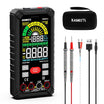




























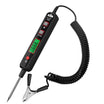
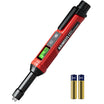





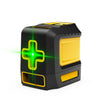
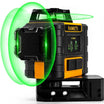


















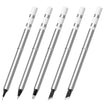







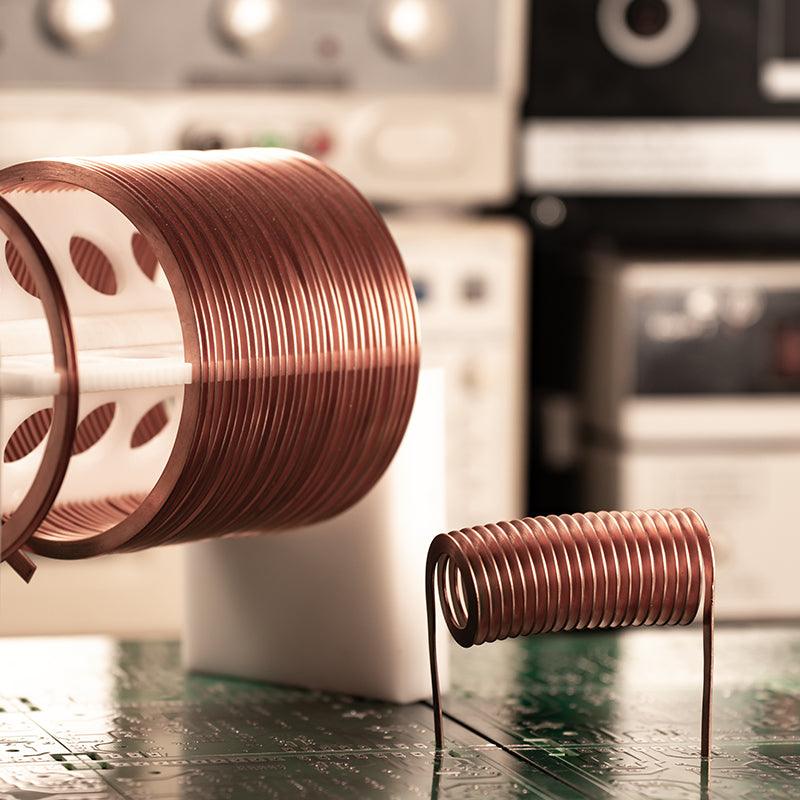
Leave a comment
All comments are moderated before being published.
This site is protected by hCaptcha and the hCaptcha Privacy Policy and Terms of Service apply.